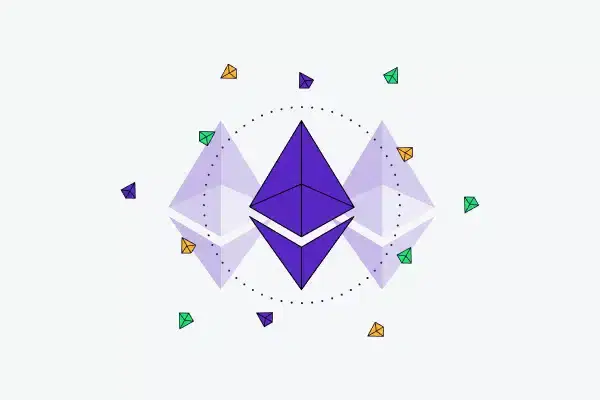Overview
On or around September 15th, 2022 the Ethereum network will undergo a significant update from Proof-of-Work (PoW) consensus to Proof-of-Stake (PoS).
During the update, all ETH and ERC-20 assets at Coinme (including MATIC, LINK, and USDC) will be safe and secure and no action is required by Coinme users during the update.
Transactional activity (including sending, receiving, buying, redeeming, and selling) of all ETH and ERC-20 assets will be paused for several hours until the Merge is complete. Follow along on Twitter or at our status page to know once the Merge is complete and it's all clear to transact with ETH again at Coinme.
What is the Ethereum Merge?
The Ethereum network will switch from Proof-of-Work (PoW) to Proof-of-Stake (PoS) to reduce the blockchain’s energy footprint and allow for future scaling improvements to be made.
The Merge will lay the foundation for Ethereum’s future roadmap as it continues to improve its scaling, efficiency, and security.

Why the Ethereum Merge matters
The brief but wondrous history of cryptocurrency has so far been punctuated by a series of events so crazy that at times they sound like they come out of a sci-fi thriller writer’s workshop.
The Merge is historic both in terms of crypto space and open-source software because the stakes (no pun intended) are so high. Besides the billions of dollars locked in the network, there are also hundreds of projects – from tokens to NFTs and decentralized services – that all run on the Ethereum network.
So the exposure and impact of the Merge is massive. But so too is the potential upside, especially in regards to the roadmap of Ethereum post-merge in terms of network economics, scalability, and overall sustainability.
What the Merge will do
One of the Merge’s massive movements will be switching the Ethereum network’s consensus mechanism from PoW to PoS.
A quick comparison:
- Proof-of-Work (PoW) is a way of finding consensus through intense computation. PoW networks issue block rewards to machines (called miners) that successfully verify and confirm transactions on the network. PoW enables permissionless (anyone can participate), decentralized computing. Overtime, as a PoW network grows, the mining difficulty becomes more intense, often requiring more computing resources (and specialized hardware) to be competitive and earn a profit. In the case of bitcoin, the largest and most secure PoW network in the world, mining has become controversial because of the amount of energy now required.
- Proof-of-Stake (PoS) is a way of finding network consensus through validators, opposed to miners. Instead of dedicating massive computing resources, validators dedicate financial resources to the network to become eligible to validate blocks. In exchange, they receive block rewards if they participate in the validation process. Once staked, validators are chosen by the network to evaluate and finalize transactions. If validators are not functioning honestly, they can be slashed from the network and the validator’s staked assets can be lost. While PoS is more energy efficient, there are concerns that large exchanges or groups can hold a majority position of validators, essentially controlling the network.
The change of consensus mechanism is a major shift in crypto dogma that will have implications and considerations outside day-to-day operations. The Merge will create an even further distinction between Bitcoin and Ethereum, the two most dominant blockchains in existence today.
When the Merge will happen
The Merge will likely happen sometime on September 15, 2022. The event is not connected to a specific date or time, but instead it is correlated to a metric known as Terminal Total Difficulty.
Once a predetermined level is hit, the network will switch to PoS. All past transaction data and information will then be available on the new PoS network.
It’s important to note that the Merge has been in development for years, and that the process is dependent on numerous updates and upgrades that have come before it, including the most recent release of the Bellatrix update on September 6.
How the Merge will impact Ethereum
The Merge is intended to make way for other upgrades to the Ethereum network aimed at improving transaction capabilities, network costs, and the underlying monetary policy.
Some notable upgrades to watch out for:
- Big chain energy: One of the biggest critiques of PoW is the amount of energy needed to secure the network. What will be the next critique when Ethereum switches to PoS?
- Sharding enabled: As mentioned earlier, the ability for transaction info to be processed in segments across the network will dramatically improve scaling.
- Deflationary: The Merge will have an impact on the underlying economics of the ETH by reducing the block reward by approximately 90%.
If nothing else, the Merge should be viewed as a massive shakeup in the crypto space, and one that shows the adaptability and global coordination inherent in open-source projects.
How to prepare
If you hold ETH or any ERC-20 tokens with Coinme, no action on your part is required.
However, please be aware that ETH and ERC-20 token transactions during the Ethereum Merge will be paused for several hours. Follow along on Twitter or at our status page to know once the Merge is complete and it’s all clear to transact with ETH again at Coinme.
During the Merge, your assets at Coinme will be safe and secure.
Be vigilant for scams
During the Merge, there may be an increase in scammers attempting to separate you from your ETH. Please be weary of anyone requesting that you move your ETH assets in order for the Merge to be completed. No such action is required. Coinme will not ask you to move any assets out of your wallet.



